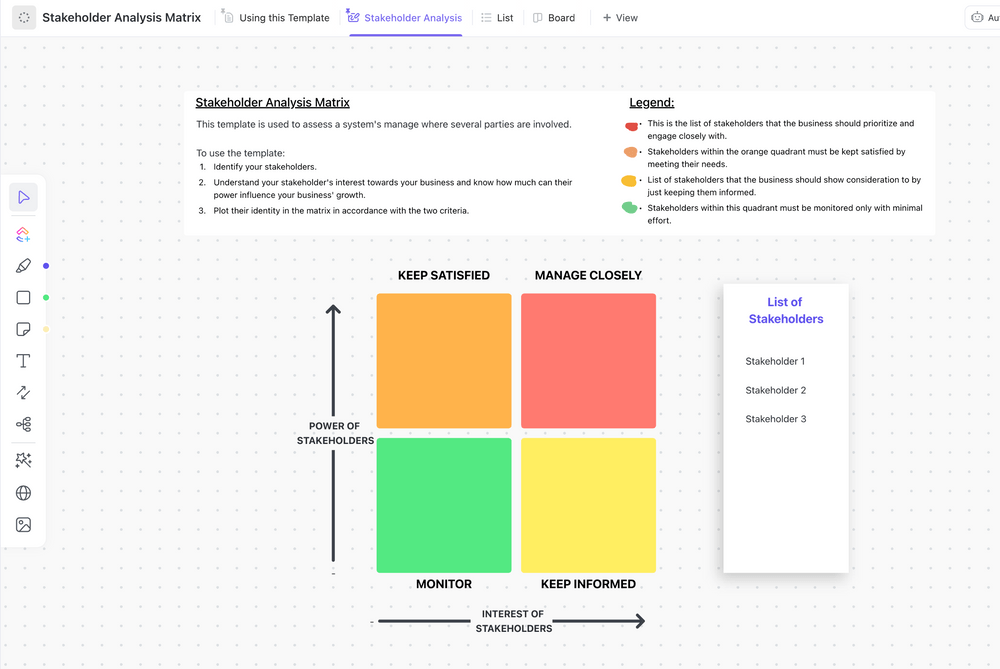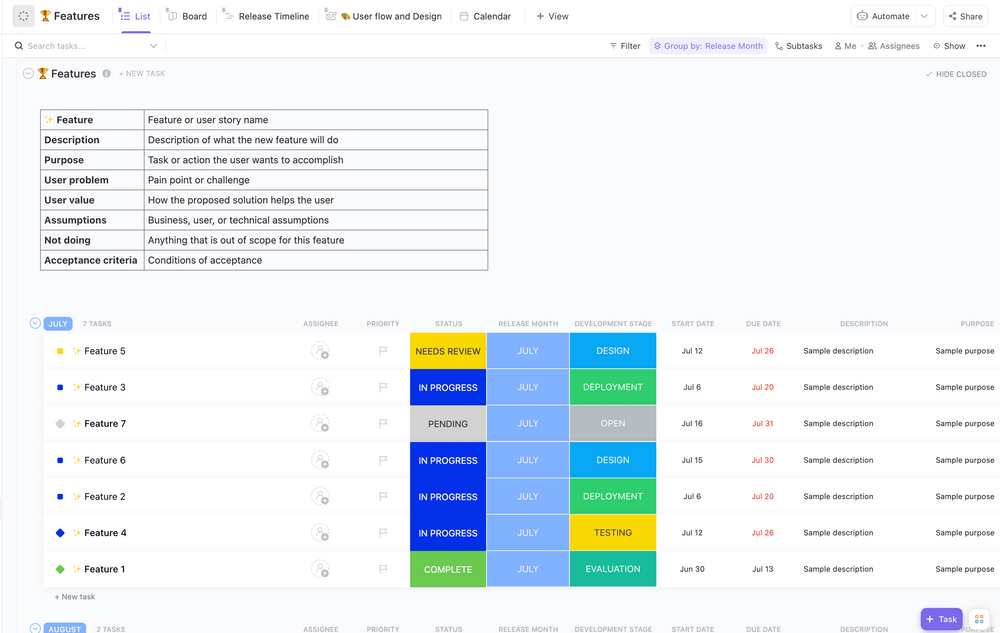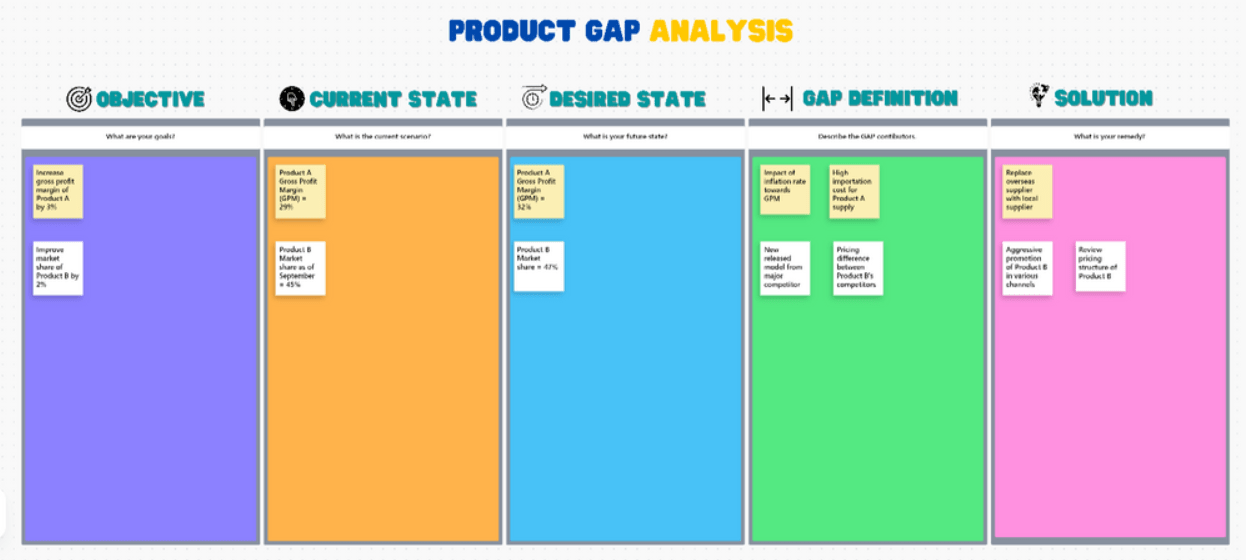

Imagine building a house without a clue about its final size and outline. You wouldn’t know how deep your foundations should be, how much material you should order, and how many workers and days it will take to finish. In other words, without being aware of the requirements, your house-building project is doomed to fail before it even begins. 🏠
The same goes for software development—you need to properly understand what the product should accomplish from the get-go. Without it, you risk ending up with software that might work perfectly, just not in the way your end users and customers want and expect.
This is where a requirements analysis steps in, helping you identify, document, analyze, and prioritize stakeholder needs and expectations from a new or revamped system. It’s a crucial activity for figuring out the project scope, keeping stakeholders and developers aligned, and ultimately, improving customer satisfaction and the quality of deliverables.
So, what’s this requirements analysis all about, who does it, how, and when? We’ll answer all these questions and more in this article, so stay tuned!
What Is Requirements Analysis?
While almost any kind of project can benefit from a requirements analysis (also known as requirements elicitation and analysis), it’s most commonly conducted in the software development industry. It’s part of the broader requirements software engineering process that’s used to thoroughly understand and analyze the requirements for any software development project.
Its goal is to remove any ambiguity and misunderstanding from the product development process, ensuring your team and the stakeholders are on the same page.
The activities that go into a typical requirements analysis process include:
- Identifying key stakeholders: These include end users, customers, clients, and other interested parties
- Collecting stakeholder requirements: Gathering information about the desired features, limitations, and objectives
- Documentation: Creating a structured record of user stories, use cases, and other product specifications
- Analysis: Assessing the viability and consistency of the collected requirements and resolving any conflicts
- Requirement prioritization: Helps with resource allocation and leads to better decision-making
- Change management: Coming up with processes for dealing with changing requirements throughout the development lifecycle
When to run a requirements analysis?
Requirements analysis is generally performed in the early stage of a development project before moving on to phases like design, implementation, and testing.
You might also want to perform a detailed analysis if your existing product or system undergoes major changes. It’s a way to understand which new features are required and get stakeholders’ approval for any modifications you want.
In Agile project management specifically, requirements analysis is an ongoing business process instead of a do-once-forget-forever kind of job. It is conducted in regular intervals, allowing Agile teams to modify the requirements in line with the latest customer feedback and insight.
Who performs a requirements analysis?
Requirements analysis is a collaborative effort involving multiple key stakeholders in the software development process, most commonly:
- Project managers
- Product owners (in Agile methodologies)
- Customers
- Software engineers and developers
- QA specialists
Other members who may participate in the analysis depending on the project complexity include subject matter experts, business process analysts, representatives of regulatory bodies, software architects, marketing and sales team representatives, etc.
Benefits of Requirements Analysis in the Software Development Process
Requirements analysis can lead to higher client satisfaction rates and efficient and satisfied team members willing to give their best to every project. Some of the other significant benefits include:
- Vision clarity: It enables a clear vision and a roadmap for the development and direction of the project
- Team clarity: It helps everyone working on the project understand project requirements clearly
- Conflict management: It assists with the early identification of conflicting requirements so they can be managed properly
- Improved product relevance: It helps ensure that the software you develop aligns with all the requirements and is capable of achieving the intended purpose
Common Challenges of a Requirements Analysis
As we’ve seen, a requirements analysis is an integral part of any successful development project, but it comes with its share of challenges. The most notable ones include:
1. Lack of clarity among stakeholders
Stakeholders often don’t have a clear idea of what they want from the software or struggle with expressing their requirements coherently and accurately. This ambiguity can create misunderstandings and problems in the later stages of development, such as scope creep and missed functionalities.
2. Dynamic nature of requirements
The requirements you gathered originally may change or even become irrelevant at some point due to changing market conditions or end-user priorities. So, have a backup requirements management plan in place, and if you feel that there’s a significant shift in the requirements, go back to the drawing board and conduct requirements analysis again. 📝
3. Conflicting nature of requirements
Some of the collected requirements may be at odds with each other, and you can choose only one to implement in the product. For instance, there’s usually a trade-off between software security and performance—the more security checks you put in place, the slower the program.
You should clearly communicate these conflicting requirements to the stakeholders so that you can find a compromise solution.
4. Internal politics
Team members with different skill sets may want the project requirements to be set up in a way that emphasizes their role more. You should be wary of such tendencies and inform your stakeholders about them to ensure an unbiased and agenda-free analysis process.
Requirements Analysis Process: 6 Key Steps
Requirements analysis is a complex business process that requires extensive communication, documentation, and meticulous organization of information collected from various stakeholders.
While the exact analysis process will depend on your specific scenario, we’ll show you the six steps that have to be followed to capture your software requirements with precision.
We’ll also see how ClickUp—a robust project and product management tool—can help you plan, manage, and implement each of these steps. The platform’s Product Management Suite provides all the features you need for streamlined requirements management.
Step 1: Identify key stakeholders
The first step is to identify all the stakeholders involved in your development project because each will have their own requirements and expectations. This includes your clients as well as customers and end-users of the software you’ll be developing. Remember that your team members and managers are also stakeholders with varying levels of influence and interest in the project.
The easiest way to group these stakeholders is by using ClickUp Whiteboards. This virtual canvas allows you to visualize and simplify any idea or relationship with drawings, shapes, sticky notes, and colors.
If you’re looking for a leg up with this step, use the Whiteboard-based ClickUp Stakeholder Analysis Matrix Template. It lets you group your stakeholders into four categories according to their power and interest in the project.

Step 2: Collect and document stakeholder requirements
Once you have your stakeholders identified and grouped, you can start the process of collecting their requirements.
You should begin with one-on-one meetings and interviews, followed by conference calls with groups of stakeholders based on the categories you specified in the first step. The point is to identify potential overlaps and conflicts in the business requirements of different stakeholder groups.
If you want to streamline the collection process and spare yourself endless interviews, use ClickUp Forms for software engineering teams. This feature lets you create custom forms for gathering feedback from stakeholders and user groups, getting precious insights into how they want the software to work and look.
ClickUp Forms optimizes your requirements analysis process even further by automatically converting form responses into tasks for your development team.
On top of that, you can make the intake process much easier with the help of conditional logic. The forms will automatically change depending on the form taker’s answers, leading to more relevant responses and more valuable information on requirements.

Bonus tip: If you need an easy way to capture user stories but don’t want to bother creating forms, you can use the ClickUp User Story Template. Use it to convert user stories into smaller tasks, which you can easily organize, prioritize, and monitor through to completion.

Once you have collected stakeholder requirements, you’ll need a way to organize all the information in one easily accessible and searchable place. Luckily, ClickUp has a perfect tool for that, too—ClickUp Docs. It’s the platform’s text editor and document management system, ideal for making a repository of your stakeholder requirements and adding it to any part of your ClickUp Workspace.
You can collaborate on the Docs with your team in real time with options like tagging, commenting, co-editing, and converting text directly into tasks to optimize workflows. Quickly share the Docs with different groups of shareholders through shareable links and permissions settings for team, guest, and public access.

Step 3: Group the requirements
Once you know what your stakeholders want and expect from the product, it’s time to group the requirements based on their nature. Generally, you’ll find two types of requirements:
- Operational requirements: Also known as business requirements, they represent the necessary operations the software must be able to carry out according to your stakeholders’ operations strategy and objectives. Think of business requirements as the scope of functionality that you need to develop in your software
- Software requirements: They pertain to various functions the product must have to fulfill the operational requirements. These requirements can be further divided into two subgroups for better understanding:
- Functional requirements: These are the functions that must be present in the software you deliver to the client. Examples include user login functionality, data backup functionality, admin panel, and user profiles
- Non-functional requirements: These are not actual functions but still make an important part of the software. Examples of non-functional requirements include performance, scalability, and security
Step 4: Prioritize the requirements
Budget and resources are almost always limited, and each project has to be completed within those constraints. That’s why prioritization of requirements is essential—it helps you decide what must be done ASAP and what can be put on hold.
Here’s how you should prioritize and manage the requirements of each group of stakeholders:
| Stakeholder group | Priority of requirements | How to manage their requirements |
| High influence, highly interested | Highest | Thoroughly assess their needs and make them understand the technical limitations or differences of opinion, if any |
| High influence, less interested | High | Record their expectations and share them with project owners to ensure the accuracy of your requirements analysis |
| Low influence, highly interested | Low | Carefully analyze the suggestions and expectations of this group. Try to understand if they’re driven by rationale or ambitions |
| Low influence, less interested | Lowest | Record their requirements but do not prioritize them over the requirements of other groups |
Step 5: Analyze and model the requirements
The next step is to evaluate all the requirements you have gathered, noted down, and organized so far, and build some software concepts around them. The tasks carried out in this phase include:
- Identification of all externally accessible data objects
- Data flow visualization
- Defining functions based on data objects and flows
- Determining the value of each data flow and object
- Complete conceptualization of software operations
- Defining system interface
- Identifying technical limitations and constraints
Step 6: Draft the specifications document
Finally, it’s time to put all your finalized requirements in a document and get it signed by all relevant stakeholders. This document is often called the software requirements specification (SRS) or product requirements document.
Bonus tip: Once software requirements are finalized, you can use the ClickUp Product Requirements Template to organize them neatly, along with priority levels and status. The status can be used to track whether a feature has been tested for feasibility and conflicts. At the same time, the priority level can tell you how important a feature or requirement is.

Best Requirements Analysis Techniques and Tools
Requirement analysis is more than just interviewing and documenting—you must build detailed graphic models to visualize the product’s functionality. These models help the software architects and design teams get clarity on how different functions of the software will interact with each other.
We’ll now explore the most well-known visualization approaches and requirements analysis techniques and show you how to implement them to build exceptional software requirement models.
1. Gap analysis
In a nutshell, gap analysis analyzes the gap between a business’s current and desired capabilities. In the context of requirements analysis, gap analysis is conducted to identify and bridge the performance gaps between the software’s current and target (required) state.
ClickUp provides you with dozens of gap analysis templates you can use to better understand and achieve your product’s requirements. Some of them include:
- ClickUp Gap Analysis Template
- ClickUp Product Gap Analysis Template
- ClickUp User Experience Gap Analysis Template
- ClickUp Product Development Gap Analysis Template
- ClickUp App Developers Gap Analysis Template
You can use any of these gap analysis templates to organize the information regarding the current and desired state of your software program on a digital whiteboard. Once you have it all laid out, you can use drawings and sticky notes to collaboratively determine deficiencies in your product’s performance and find ways to overcome them.

2. Flowcharts
Flowcharts are commonly used to visualize business processes, and you can employ them in requirements analysis to capture how different functions of your software will interact. They include various shapes like rectangles, squares, and ovals, connected with arrows and lines for illustrating a process.
You can start creating flowcharts quickly with ClickUp Mind Maps. This feature lets you drag and drop nodes on a digital canvas and make connections between them to map the functions and data objects. Once created, Mind Maps can be easily shared with stakeholders or attached to Docs containing product requirements.

In addition to Mind Maps, you can use dozens of ClickUp templates to build your flowcharts and data flow diagrams effortlessly. Our favorite ones are:
3. Gantt charts
Gantt charts are used for visualizing the schedules and relationships between multiple activities within your project portfolio, offering a bird’s eye view of the overall progress. As one of the best requirements analysis techniques, Gantt charts paint a picture of the expected time and order of development for each requirement, helping to set a dynamic timeline for the entire process.
ClickUp Gantt charts let you visualize and organize all aspects of your requirements analysis process, from tracking task dependencies and timelines to managing priorities—all in real time. You can easily schedule and assign tasks, handle deadlines, identify bottlenecks, and keep track of the overall progress of the requirements analysis process.

Master Your Requirements Analysis Game with ClickUp
Requirements analysis is a demanding but nevertheless critical business process for the success of any project. It requires a great deal of open communication, effective collaboration, and meticulous organization in collecting and reconciling the business needs and expectations of numerous interested parties.
Luckily, ClickUp can help you streamline your requirements analysis journey. With its comprehensive suite of collaboration, documentation, and flowcharting features, along with ready-made templates, ClickUp is your ticket to smooth sailing in product development.
Give ClickUp a try and see how it improves your requirements analysis process and project planning. It’s free to get started!



